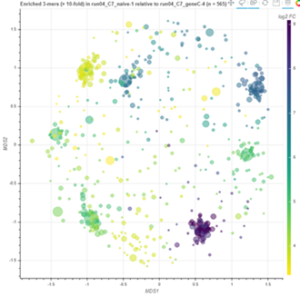Cross BU CSIRO project seeks ways to gum up coronavirus tracks
Coronaviruses get their name from the spike proteins coating the outer layer of the viruses, which give them the characteristic crown-like shape.
Coronaviruses get their name from the spike proteins coating the outer layer of the viruses, which give them the characteristic crown-like shape. The viruses depend on the spike proteins to recognise and infect healthy cells. One way to potentially slow/stop COVID-19 in its tracks is to find ways to interfere with the spike proteins, which diminishes the ability of SARS-CoV-2 to bind and infect new cells.
Over the past eight weeks, a team in The Probing Biosystems Future Science Platform has re-focused their combined expertise to search for short peptides that bind to the spike proteins. The “gluing” of this peptide to the spike protein would block the spike protein, akin to bending electrical plugs so that they can’t fit into existing wall outlets. By doing so, the viruses are less able to recognise and bind to healthy cells lining the lungs, stopping the viral hijacking of normal cells to produce more viral particles.
This project would not be possible without the diverse and far-ranging capabilities of CSIRO across its multiple business units and sites. This state-crossing relay race starts in Victoria (Manufacturing, Parkville), where the target proteins are synthesised (sans genetic material, so it’s completely inert); these proteins then make their way to Adelaide (H&B, Kintore), where they are immobilised on beads and exposed to hugely diverse peptide libraries (billions of peptides). These experiments pick out peptides that “stick” well to the spike proteins.
The precious samples from these experiments then make their way to NSW (H&B, North Ryde), where information of the peptide binders (in DNA form) is obtained from a next-generation sequencer. The raw results are cleaned up and prettified with in-house code, then virtually transmitted to Queensland (H&B, Herston).
The raw results are cleaned up and prettified with in-house code.
With the data dashboards, peptide engineers can then identify real binders of the spike proteins and send these sequences back to Victoria (Manufacturing, Clayton) where the peptides are synthesised.
Over the next few weeks, the first of these relay races will end in Geelong at the Australian Centre for Disease Preparedness where the efficacy of the peptides will be tested against the live SARS-CoV-2 virus.
The intention of the research is to generate peptide therapeutics that could be formulated into inhalers and used as protective prophylactics for front line health workers.


